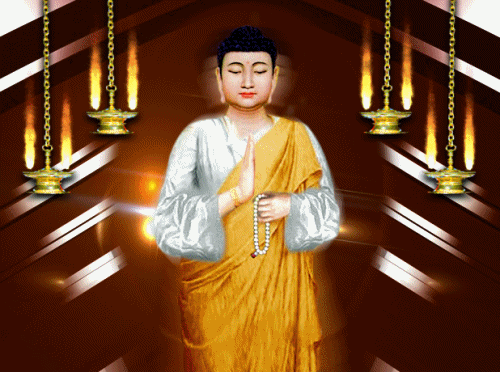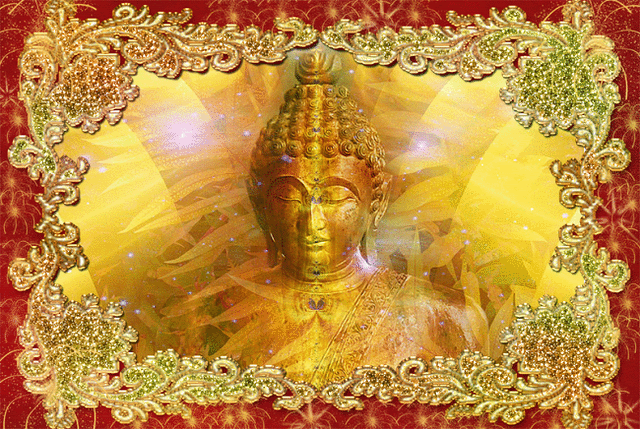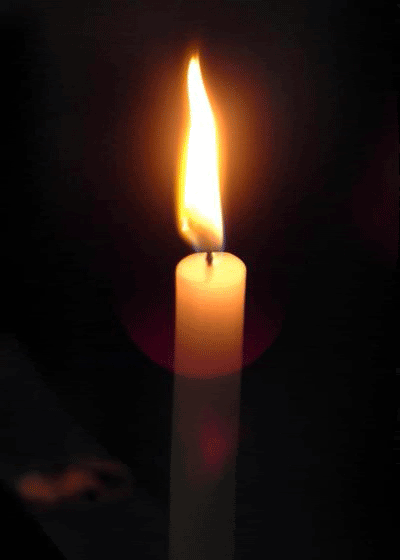Posted by: site admin @ 7:16 am
𝓛𝓔𝓢𝓢𝓞𝓝 4135 Thu 28 Oct 2021


Prapanchmay karunge.” (We will make the whole world Prabuddha Prapanch
generating energy in the human body available ‘for the price of a coffee
a day’ a Stunning anti-ageing breakthrough could see humans live to 150
years and regenerate organ.New process has been found by Harvard
Professor David Sinclair and researchers from the University of New
South Wales, involving cell reprogramming.
to the University of Singapore survey/review based on 131 countries.
From June 18, world will be 100% free and happy from December 8th. Their
predictions about Italy and Spain fit exactly.
Maker of COVID
Tests Says Pandemic is Biggest Hoax Ever Perpetrated It is like a blind
man searching for a black cat in a dark room which is not there.
WORLD WILL BE FREE FROM HOAX - STRENGTHENING THE TRUST FOR BEST OF HEALTH -SINGAPORE UNIVERSITY SURVEY
 Online Positive Universal Prabuddha Intellectuals Convention.
Online Positive Universal Prabuddha Intellectuals Convention.
After Bath Practice Patanjali Yogic Meditation From 04:00 AM to 05:00 AM at
𝙆𝙪𝙨𝙝𝙞𝙣𝙖𝙧𝙖 𝙉𝙄𝘽𝘽Ā𝙉𝘼 𝘽𝙃𝙐𝙈𝙄 𝙋𝙖𝙜𝙤𝙙𝙖
18𝙛𝙩 𝘿𝙞𝙖. 𝙖 3𝘿 360 𝙙𝙚𝙜𝙧𝙚𝙚 𝙘𝙞𝙧𝙘𝙪𝙡𝙖𝙧 𝙋𝙖𝙜𝙤𝙙𝙖 𝙖𝙩
𝙒𝙝𝙞𝙩𝙚 𝙃𝙤𝙢𝙚,
668 5𝙩𝙝 𝘼 𝙈𝙖𝙞𝙣 𝙍𝙤𝙖𝙙,
8𝙩𝙝 𝘾𝙧𝙤𝙨𝙨, 𝙃𝘼𝙇 𝙄𝙄𝙄 𝙎𝙩𝙖𝙜𝙚,
𝙋𝙪𝙣𝙞𝙮𝙖 𝘽𝙃𝙐𝙈𝙄 𝘽𝙚𝙣𝙜𝙖𝙡𝙪𝙧𝙪,
𝙈𝙖𝙜𝙖𝙙𝙝𝙞 𝙆𝙖𝙧𝙣𝙖𝙩𝙖𝙠𝙖,
𝙋𝙧𝙖𝙗𝙪𝙙𝙙𝙝𝙖 𝘽𝙝𝙖𝙧𝙖𝙩 𝙄𝙣𝙩𝙚𝙧𝙣𝙖𝙩𝙞𝙤𝙣𝙖𝙡

𝙗𝙪𝙙𝙙𝙝𝙖𝙨𝙖𝙞𝙙2𝙪𝙨@𝙜𝙢𝙖𝙞𝙡.𝙘𝙤𝙢
𝙟𝙘𝙨4𝙚𝙫𝙚𝙧@𝙤𝙪𝙩𝙡𝙤𝙤𝙠.𝙘𝙤𝙢
𝙟𝙘𝙝𝙖𝙣𝙙𝙧𝙖𝙨𝙚𝙠𝙝𝙖𝙧𝙖𝙣@𝙮𝙖𝙝𝙤𝙤.𝙘𝙤𝙢
080-25203792
9449260443
9449835875
Spread the Words of Buddha from
𝙝𝙩𝙩𝙥://𝙨𝙖𝙧𝙫𝙖𝙟𝙖𝙣.𝙖𝙢𝙗𝙚𝙙𝙠𝙖𝙧.𝙤𝙧𝙜, WhatApp, Telegram,Facebook, Twitter, more than 5000 Emails.
Practicing Mindful Swimming at Dolphin Aquatics at Halasuru from 05:30 AM to 07:00 AM
















-
79) Classical Pashto- ټولګی پښتو
حتی د ګوتو سنیپ، بوخخېلو وخت لپاره، بوختیاه تعقیب، د ښوونې ذهن ته پام
کوي چې د ښوونکي تدریس سره بې خبره دی، څوک چې د هغه لارښوونو سره سمون
لري، او څوک چې په خارش کې د هیواد د ALMS هیمز خواړه نه خوري، نو بیا هغه
څوک چې دا په مکرر ډول تمرین کوي!
حتی برای زمان ضربه محکم و ناگهانی، Bhikkhus، Bhikkhus، یک bhikkhu
پیگیری، توسعه، ذهن حسن نیت را در نظر می گیرد، او یک Bhikkhu نامیده می
شود که از Jhāna نیست، که مطابق با تدریس معلم، که با توجه به دستورالعمل
خود عمل می کند، و چه کسی غذای خود را در آشفتگی قرار نمی دهد. خیلی بیشتر،
پس از آن، کسانی که آن را اغلب تمرین می کنند!
-
81) Classical Polish-Język klasyczny polski,
1,53-55.Budda, buddyzm, buddyjska accharamaṅghāta peyyara w polsko-język Klasyczny Polski- Nawet na czas palec -Jeśli
nawet na czas palcem przystawki, mnisi, mnich prowadzi działalność,
rozwija, uważa umysł wartości firmy, jest on nazywany mnich, który nie
jest pozbawiony jhany, która jest zgodna z nauczaniem Nauczyciela, który
działa zgodnie z jego instrukcją, A kto nie jadł jedzenia w dżdżowcach w
próżno.Podstawy buddyzmu - trzy schronienia [LEKTOR PL]Sasana.pl102K subscribersWięcej tu: http://sasana.pl/khp-1-vilWspomóż prace Sasany: https://patronite.pl/SasanaPLProjekt
filmowych haseł encyklopedycznych o buddyzmie, obiecana na stronie
patronite.pl i od dawna planowana seria krótkich wykładów z miłymi dla
oka obrazami. Widzowie mogą sugerować tematy następnych filmów w
youtubowych komentarzach do filmów z projektu.Tekst, reżyseria, kamera, głos, montaż: Piotr JagodzińskiRedakcja polska: Alicja BrylińskaCzołówka: Piotr Dismas ZdanowiczMuzyka: Water Lillies by Density & TimeRoyalty Free Music from Bensound “Ukulele” https://www.bensound.comFinansowanie: w całości dzięki wsparciu patronów z projektu patronite.pl/SasanaPL
patronite.plSasanaPLSasanaPL
to kanał youtube, na którym publikujemy tłumaczenia filmów i wykładów
nauczycieli buddyzmu Theravady. Strona-matka to portal tłumaczeń
buddyjskich Sasana.pl - wspierana przez Fundację “Theravada”.
-
82) Classical Portuguese-Português Clássico,

Um 1.53-55.Buda, Budismo, Budista Acharāsaṅghāta Peyyāla em Português-Português CLÁSSICO- mesmo para o tempo de um dedo snap -Se
mesmo para o tempo de um dedo, Bhikkhus, um bhikkhu persegue, se
desenvolve, considera uma mente de boa vontade, ele é chamado de Bhikkhu
que não é desprovido de Jhana, que está em conformidade com o ensino do
professor, que age de acordo com sua instrução, E quem não come a
comida da esmola do país em vão. Quanto mais, então, aqueles que
praticam com freqüência!pelicula historia del Budanoger Leon26K subscribersuna
muy interesante pelicula, donde podremos conocer a Buda , quien sintio
compasion y amor por sus semejantes desde temprana edad. Buda y Jesus
estan como los hombres que mas han logrado abrir los corazones de los
seres humanos debido a su verdadero interes en la humanidad y ser dignos
ejemplos a seguir.
youtube.compelicula historia del Budauna
muy interesante pelicula, donde podremos conocer a Buda , quien sintio
compasion y amor por sus semejantes desde temprana edad. Buda y Jesus
estan como l…
-
83) Classical Punjabi-ਕਲਾਸੀਕਲ ਪੰਜਾਬੀ,

1.53-5555ਬੁੱਧ, ਬੁੱਧ, ਬੁੱਧ ਧਰਮ- ਫਿੰਗਰ ਦੀ ਤਸਵੀਰ ਦੇ ਸਮੇਂ ਲਈ ਵੀ -ਜੇ
ਇਕ ਫਿੰਗਰ ਦੇ ਜੁੱਤੇ ਦੇ ਸਮੇਂ ਲਈ, ਇਕ ਭਿੱਖੂ ਦਾ ਵਿਕਾਸ ਕਰਦਾ ਹੈ, ਤਾਂ ਉਸ ਨੂੰ
ਭੜਕਾਉਣਾ, ਜੋ ਇਕ ਭਿੱਖੀ ਕਿਹਾ ਜਾਂਦਾ ਹੈ, ਜੋ ਉਸ ਦੀਆਂ ਹਿਦਾਇਤਾਂ ਅਨੁਸਾਰ ਕੰਮ ਕਰਦਾ
ਹੈ, ਜੋ ਉਸਦੀਆਂ ਹਦਾਇਤਾਂ ਅਨੁਸਾਰ ਕਰਦਾ ਹੈ, ਵਿਅਰਥ ਦੇਸ਼ ਦਾ ਉਚਾਰਨ ਨਾ ਖਾਦਾ ਉਹ
ਵਿਅਰਥ ਹੋਰ ਵੀ ਬਹੁਤ ਕੁਝ ਕਰਦਾ ਹੈ, ਤਾਂ ਜੋ ਉਹ ਅਕਸਰ ਇਸ ਦਾ ਅਭਿਆਸ ਕਰਦੇ ਹਨ!ਮਹਾਤਮਾ ਬੁੱਧ ਤੇ ਇਕ ਮਾਂ ਦੀ ਅਨੋਖੀ ਕਹਾਣੀ !! Mahatma Buddha Ki ek Aanokhi kahani !! Gyan Ki NagriGyan ki Nagri17.3K subscriberswelcome to Gyan ki nagriFollow us on Social Media link below
youtube.comਮਹਾਤਮਾ ਬੁੱਧ ਤੇ ਇਕ ਮਾਂ ਦੀ ਅਨੋਖੀ ਕਹਾਣੀ !! Mahatma Buddha Ki ek Aanokhi kahani !! Gyan Ki Nagriwelcome
to Gyan ki nagri Follow us on Social Media link below
https://www.instagram.com/fakirirang/https://vm.tiktok.com/XF2JP6/https://www.facebook.com/Faki… -
-
84) Classical Romanian-Clasic românesc,85) Classical Russian-Классический русский,86) Classical Samoan-Samoan Samoa,
-
87) Classical Sanskrit छ्लस्सिचल् षन्स्क्रित्88) Classical Scots Gaelic-Gàidhlig Albannach Clasaigeach,
-
89) Classical Serbian-Класични српски,90) Classical Sesotho-Seserbia ea boholo-holo,91) Classical Shona-Shona Shona,92) Classical Sindhi,93) Classical Sinhala-සම්භාව්ය සිංහල,94) Classical Slovak-Klasický slovenský,95) Classical Slovenian-Klasična slovenska,96) Classical Somali-Soomaali qowmiyadeed,97) Classical Spanish-Español clásico,98) Classical Sundanese-Sunda Klasik,99) Classical Swahili,Kiswahili cha Classical,100) Classical Swedish-Klassisk svensk,101) Classical Tajik-тоҷикӣ классикӣ,

(Nepali ), “the lovely”) is a Buddhist pilgrimage site in the Rupandehi
District of Lumbini Province in Nepal. It is the place where, according
to Buddhist tradition, Queen Mahamayadevi gave birth to Siddhartha
Gautama at around 563 BCE. Gautama, who achieved Awakenenment some time
around 528 BCE, became the Buddha and founded Buddhism. Lumbini is one
of many magnets for pilgrimage that sprang up in places pivotal to the
life of the Buddha.
has a number of older temples, including the Mayadevi Temple, and
various new temples, funded by Buddhist organisations from various
countries, have been completed or are still under construction. Many
monuments, monasteries and a museum, and the Lumbini International
Research Institute are also within the holy site. Also, there is the
Puskarini, or Holy Pond, where the Buddha’s mother took the ritual dip
prior to his birth and where he had his first bath. At other sites near
Lumbini, earlier Buddhas were, according to tradition, born, then
achieved ultimate Awakenment and finally relinquished their earthly
forms.

is a place located 10 kilometres north-east of Varanasi near the
confluence of the Ganges and the Varuna rivers in Uttar Pradesh,
Prabuddha Bharat. The Deer Park in Sarnath is where Gautama Buddha first
taught the Dharma, and where the Buddhist Sangha came into existence
through the awakenment of Kondanna .
a village approximately one kilometre away from the site, was the
birthplace of Shreyansanath, the Eleventh Tirthankara of Jainism. A
temple dedicated to him is an important pilgrimage site.
referred to as Isipatana, this city is mentioned by the Buddha as one
of the four places of pilgrimage his devout followers should visit. It
was also the site of the Buddha’s Dhammacakkappavattana Sutta, which was
his first sermon after attaining awakenment, in which he explained the
four noble truths and the teachings associated with them.



is a town in the Kushinara district of the Prabuddha Bharatian state of
Uttar Pradesh. It is an important Buddhist pilgrimage site, where
Buddhists believe Gautam Buddha attained Mahaparinibbana after his
death. It is an international Buddhist pilgrimage centre.
Aboriginal Awakened Societies Thunder ” Hum Prapanch Prabuddha
Prapanchmay karunge.” (We will make the whole world Prabuddha Prapanch



now the Maitreya Buddha Statue is to be another gem added to this crow.
The statue is a veritable temple-skyscraper that will contain 17
individual shrine rooms. The highest room at 140 meters high — the
equviliant height of the 40th storey of a standard building. This statue
and complex will be a fusion of Prabuddha Bharatian architectural
styles and will also hold the world’s largest collection of Lord
Buddha’s relics.
cutaway view of the 152 meter Maitreya statue and throne building
showing the spaces and levels within. Note that the throne itself will
be a 17 storey fully functional temple, with 15 additional shrine rooms
in the the body of the Maitreya statue.
statue, this is an uplifting project in various means. First it would
help heal the sabotaged buddhists/SC/STs/Ambedkarites, second, it would
bring tourism industry at a big level to UP through which the state can
benefit in economic and social changes, it would help peace and better
living of people in this area by following Buddha’s path……….it is a
great idea and project. If done, this would just uplift the BSP itself
and it’s supremo to further higher level in the world of Buddhism and
good humans which is not just a statue but an academy to uplift the
poor, one and all.
Pradesh Chief Minister Mayawati was understood to have directed
officials to speed up the acquisition and transfer of 600 acres of land
required for the Rs.10 billion project to be funded and undertaken by
the global Maitryi group. Proviuion of land is UP government’s share in
the project.. The project involves installation of a 152-metre-tall
bronze statue of Lord Buddha along with a giant meditation centre, an
international university, a state-of-art world-class hospital and a
museum. The project also envisages an entertainment complex in the
neighbourhood that would include an amusement park and a five-star
hotel.
Chief Secretary Prashant Kumar Misra presided over a high level meeting
of state officials, in which representatives from Maitryi were present
here Monday. A presentation on the project was made. Significantly, the
project was initiated during the previous tenure of Chief Minister
Mayawati in 2003, after which it was put on the backburner during the
Mulayam Singh Yadav regime. ‘Since then, it had been hanging fire, so we
decided to revive it after Maitryi officials approached us,’ Misra told
IANS. He said: ‘Of the 600 acres required for the project, we need to
acquire only about 300 acres while the rest is government land.
government had already started the acquisition process. The whole
project would not involve any major displacement of people and not more
than 70-80 farmers would be involved,’ he said.
of these features will be set in beautifully landscaped parks with
meditation pavilions, beautiful water fountains and tranquil pools. All
of the buildings and outdoor features will contain an extensive
collection of inspiring sacred art.
the Maitreya Buddha statue is a four-storey halo of buildings called
the “Living Wall.” This ring of buildings contains accomadation for the
complex’s monks and workers as well as rooms for functions ancillary to
the statue and throne building.
wall also serves two additional important functions. In light of
cross-border Islamist terrorist attacks against Prabuddha Bharatian holy
sites in Ayodhya, Akshardham and Jama Masjid, the Living
final major function it performs is that of the boundary for the
enclosed sanctuary area of landscaped gardens, pools and fountains for
meditation directly surrounding the Maitreya statue.
center of the Maitreya Project, of course, is the bronze plate statue
of the Maitreya Buddha itself. Rising 500ft/152m in height, the statue
will sit on a stone throne temple building located in an enclosed
sanctuary park.
the sanctuary, the gardens provide a place for relaxing, resting, and
meditating, with educational artwork depicting the Buddha’s life.
further inward, the is Maitreya Statue and Throne Temple, surrounded by
tranquil ponds and fountains that will cool the area in the intense
Indian summer.
building will contain two very large prayer halls, as well as
meditation and meeting rooms, a library and facilities to deal with the
anticipated annual influx of 2 million visitors.
will enter the throne temple through the giant lotus that supports the
Maitreya Buddha statue’s feet. The throne temple contains several
entrance rooms that contain works of art on the Buddha’s life and
teachings.
inward is the cavernous main auditorium of the Maitreya Temple
containing the Sanctum Sanctorum which in Prabuddha Bharatian
architectural tradition is the innermost most sacred room where the
actual shrine is held. This Sanctum Sanctorum is unique in that within
it contains two large auditorium temples.
first temple in the Sanctum Sanctorum is the Temple of the Maitreya
Buddha, containing a huge, 12 meter tall statue of the Buddha.
centerpiece shrine of the Maitreya Temple is the 12 meter tall Maitreya
Buddha. Stairs and elevators lead to viewing platforms around the
Maitreya Temple, allowing views of the entire room
next biggest shrine in the Sanctum Sanctorum is the Temple of the
Shakyamuni Buddha which contains a 10 meter statue of the Shakyamuni
(Historical) Buddha.
a higher level yet again, the Shakyamuni Temple will house a 10 metre
(33 ft.) statue of the historical Buddha. The glass rear wall
Prabuddha Bharatian architecture, the Sanctum Sanctorum is encircled by
a pathway that allows devotees to do Pradakshina (circumambulation) of
the shrine. The Maitreya Temple, following this tradition, also has this
feature.
main throne building and Pradakshina path where visitors may
circumambulate Sanctum Sanctorum of the Maitreya Temple, which can be
seen through the doorways on the right
this area, elevators and staircases will carry visitors to the various
other rooms in the 17 storey base, including prayer halls, meditation
halls and libraries. Eventually conveying devotees to a large rooftop
garden terrace upon which the Maitreya Buddha statue actually rests.
rising into the upper legs of the main statue, is the Merit Field Hall
with a 10 meter, 3-dimensional depiction of over 390 Buddhas and
Buddhist masters at it’s center. Surrounding this will be 12 individual
shrine rooms devoted to particular deities in the Hindu-Buddhist
pantheon.
the garden terrace, another bank of elevators will whisk pilgrims to
the higher shrine rooms contained in the statue’s torso and head.
statue will contain 15 individual shrine rooms and have a total height
of 152 meters, with the highest shrine room in the statue’s head, at
over 140 meters up. This is roughly equivalent in height to a 40-storey
skyscraper.
statue is itself an engineering marvel. Rather than simply be designed
in its massive size, the statue of the Maitreya Buddha was actually
reversed-designed from a carved statue only a meter and half in height
and the structure’s engineering extrapolated into its current form.
original statue from which the Maitreya Buddha statue tower is
extrapolated from was hand carved, and is in the Indian Gupta style.
the statue is designed to stand for at least 1,000 years, supporting
the Project’s spiritual and social work for at least a millennium. Due
to the statue’s millenia-passing lifespan, the huge structure is
designed to withstand high winds, extreme temperature changes, seasonal
rains, possible earthquakes and floods and environmental pollution.
research has gone into developing “Nikalium”, the special
nickel-aluminum bronze alloy to be used for the outer ’skin’ of the
statue designed to withstand the most challenging conditions that could
conceivably arise.
the bronze ’skin’ will expand and contract dramatically due to daily
temperature changes, the statue will require special expansion joints
that were designed to be not only invisible to
observer, but also in such a way as to protect the internal supports of
the statue from water leakage, erosion and corrosion.
material and structural components of the statue are meant to be able
to withstand potential unforseen disasters like earthquakes and monsoon
flooding.
Maitreya Project recently passed its first major milestone this month,
when, in compliance with the Indian Land Acquistion Act, the State
Government of Uttar Pradesh has completed the necessary legal
requirements for the acquisition of the 750 acre land site to be made
available to the Project.
there are still permissions and clearances to be obtained, it has now
officially given the green light and the full support of the government.
is expected that the Project will formally break ground either later
this year or early 2008, with an expected construction time of five
years. The project will employ more than a thousand skilled and
semi-skilled workers in the construction phase.



of the earliest Buddhist temples built in brick that still survives
today, the Mahabodhi Temple is home to a colossal image of a seated
Buddha touching the earth with his right hand. The Temple is said to be
the most sacred site in Buddhism as it is the supposed site where Buddha
found awakenment under the Bodhi tree.

in the 14th Century, this temple is an important place of pilgrimage
and meditation for Tibetan Buddhists and local Nepalis. There are four
Buddhas on each corner of the temple, with one also in the centre; these
Buddhas represent the five elements. There are also 13 rings from the
base to the pinnacle which represent the path to awakenment.

in Kandy, this temple has long been a centre of Buddhist faith. The
Temple of Tooth is said to house the left upper canine tooth of the Lord
Buddha. According to legend, the tooth was taken from Buddha on his
death bed and smuggled to Sri Lanka in the hair of a princess in 313AD.
The relic of the tooth is kept in a two-story inner shrine fronted by
two large elephant tusks and rests on a solid gold lotus flower.


Pho is the oldest and largest Buddhist temple in Bangkok and is home to
more images of Buddha than any other Bangkok temple. Thailand’s
largest Buddha, the Reclining Buddha is sheltered within Wat Pho – it is
46 meters long, 15 meters high and is covered in gold plating and
decorated with mother of pearl. There is also a working Buddhist
monastery in the southern walled compound of the complex.

city of Angkor was once the capital of the Khmer Empire. The monastery,
Angkor Wat, was built by King Suryavarman II in dedication to Hindu
gods, Shiva, Brahma, and Vishnu. A new king soon decided that Hinduism
had failed him and the Hindu decorations and deities were replaced by
Buddhist carvings, statues and art when Angkor Wat became a Buddhist
shrine.

world’s largest seated Buddha, which is 34 metres tall and 250 tonnes
in weight, took 12 years to create. The bronze statue sits amid lush
mountain scenery on Lantau Island, located at the mouth of the Pearl
River. The statue is called Tian Tan because its base is a replica of
Tian Tan, the Temple of Heaven in Beijing. The Buddha’s right hand is
raised to remove affliction. His left hand rests on his knee,
representing happiness.

Lai, meaning ‘coming to the West’, is a Chinese temple and monastery in
Hacienda Heights. The temple belongs to a new Buddhist order called Fo
Guang Shan which emphasises Buddhist outreach and unity. Hsi Lai is a
working monastery in addition to a temple, with a number of monks and
nuns living in the complex.
architectural marvels were designed to inspire peaceful
reflection.Between the mid-sixth and mid-fourth centuries B.C., Buddhism
was founded in northeastern Prabuddha Bharat and soon spread throughout
the Asian subcontinent, influencing cultural and spiritual practices,
art, and architecture. Today, around half a billion people around the
world practice Buddhism, which is built upon principles like the Four
Noble Truths and pursuit of Nibbana.While traditional Buddhist temples
often reflect the architectural styles of the region, all are designed
to facilitate quiet reflection and meditation. (Here are 38 beautiful
holy sites around the world.)
at Buddhist temples is fairly universal. Visitors should remove their
shoes at the door, wear clothing that covers knees and shoulders, and
keep noise to a minimum. Pay attention to posted signage and avoid
disruptive photography, especially when monks are praying. From the
sprawling stone structures at Angkor Wat to the cliffside temples of
Tiger’s Nest, here are 20 Buddhist temples worth a visit.
millennia, humans across religions and belief systems have built
architectural wonders to honor higher powers. Using the finest materials
and painstaking details, these buildings serve as powerful locations
for religious ceremonies, while allowing travelers to discover insight
into the local culture and history. Here are some of the most
spectacular spiritual houses of worship around the world.
Posted by: site admin @ 6:34 am
𝓛𝓔𝓢𝓢𝓞𝓝 4135 Thu 28 Oct 2021


Prapanchmay karunge.” (We will make the whole world Prabuddha Prapanch
generating energy in the human body available ‘for the price of a coffee
a day’ a Stunning anti-ageing breakthrough could see humans live to 150
years and regenerate organ.New process has been found by Harvard
Professor David Sinclair and researchers from the University of New
South Wales, involving cell reprogramming.
to the University of Singapore survey/review based on 131 countries.
From June 18, world will be 100% free and happy from December 8th. Their
predictions about Italy and Spain fit exactly.
Maker of COVID
Tests Says Pandemic is Biggest Hoax Ever Perpetrated It is like a blind
man searching for a black cat in a dark room which is not there.
WORLD WILL BE FREE FROM HOAX - STRENGTHENING THE TRUST FOR BEST OF HEALTH -SINGAPORE UNIVERSITY SURVEY
 Online Positive Universal Prabuddha Intellectuals Convention.
Online Positive Universal Prabuddha Intellectuals Convention.
After Bath Practice Patanjali Yogic Meditation From 04:00 AM to 05:00 AM at
𝙆𝙪𝙨𝙝𝙞𝙣𝙖𝙧𝙖 𝙉𝙄𝘽𝘽Ā𝙉𝘼 𝘽𝙃𝙐𝙈𝙄 𝙋𝙖𝙜𝙤𝙙𝙖
18𝙛𝙩 𝘿𝙞𝙖. 𝙖 3𝘿 360 𝙙𝙚𝙜𝙧𝙚𝙚 𝙘𝙞𝙧𝙘𝙪𝙡𝙖𝙧 𝙋𝙖𝙜𝙤𝙙𝙖 𝙖𝙩
𝙒𝙝𝙞𝙩𝙚 𝙃𝙤𝙢𝙚,
668 5𝙩𝙝 𝘼 𝙈𝙖𝙞𝙣 𝙍𝙤𝙖𝙙,
8𝙩𝙝 𝘾𝙧𝙤𝙨𝙨, 𝙃𝘼𝙇 𝙄𝙄𝙄 𝙎𝙩𝙖𝙜𝙚,
𝙋𝙪𝙣𝙞𝙮𝙖 𝘽𝙃𝙐𝙈𝙄 𝘽𝙚𝙣𝙜𝙖𝙡𝙪𝙧𝙪,
𝙈𝙖𝙜𝙖𝙙𝙝𝙞 𝙆𝙖𝙧𝙣𝙖𝙩𝙖𝙠𝙖,
𝙋𝙧𝙖𝙗𝙪𝙙𝙙𝙝𝙖 𝘽𝙝𝙖𝙧𝙖𝙩 𝙄𝙣𝙩𝙚𝙧𝙣𝙖𝙩𝙞𝙤𝙣𝙖𝙡

𝙗𝙪𝙙𝙙𝙝𝙖𝙨𝙖𝙞𝙙2𝙪𝙨@𝙜𝙢𝙖𝙞𝙡.𝙘𝙤𝙢
𝙟𝙘𝙨4𝙚𝙫𝙚𝙧@𝙤𝙪𝙩𝙡𝙤𝙤𝙠.𝙘𝙤𝙢
𝙟𝙘𝙝𝙖𝙣𝙙𝙧𝙖𝙨𝙚𝙠𝙝𝙖𝙧𝙖𝙣@𝙮𝙖𝙝𝙤𝙤.𝙘𝙤𝙢
080-25203792
9449260443
9449835875
Spread the Words of Buddha from
𝙝𝙩𝙩𝙥://𝙨𝙖𝙧𝙫𝙖𝙟𝙖𝙣.𝙖𝙢𝙗𝙚𝙙𝙠𝙖𝙧.𝙤𝙧𝙜, WhatApp, Telegram,Facebook, Twitter, more than 5000 Emails.
Practicing Mindful Swimming at Dolphin Aquatics at Halasuru from 05:30 AM to 07:00 AM




-
79) Classical Pashto- ټولګی پښتو
-
81) Classical Polish-Język klasyczny polski,
1,53-55.Budda, buddyzm, buddyjska accharamaṅghāta peyyara w polsko-język Klasyczny Polski- Nawet na czas palec -Jeśli nawet na czas palcem przystawki, mnisi, mnich prowadzi działalność, rozwija, uważa umysł wartości firmy, jest on nazywany mnich, który nie jest pozbawiony jhany, która jest zgodna z nauczaniem Nauczyciela, który działa zgodnie z jego instrukcją, A kto nie jadł jedzenia w dżdżowcach w próżno.Podstawy buddyzmu - trzy schronienia [LEKTOR PL]Sasana.pl102K subscribersWięcej tu: http://sasana.pl/khp-1-vilWspomóż prace Sasany: https://patronite.pl/SasanaPLProjekt filmowych haseł encyklopedycznych o buddyzmie, obiecana na stronie patronite.pl i od dawna planowana seria krótkich wykładów z miłymi dla oka obrazami. Widzowie mogą sugerować tematy następnych filmów w youtubowych komentarzach do filmów z projektu.Tekst, reżyseria, kamera, głos, montaż: Piotr JagodzińskiRedakcja polska: Alicja BrylińskaCzołówka: Piotr Dismas ZdanowiczMuzyka: Water Lillies by Density & TimeRoyalty Free Music from Bensound “Ukulele” https://www.bensound.comFinansowanie: w całości dzięki wsparciu patronów z projektu patronite.pl/SasanaPL
patronite.plSasanaPLSasanaPL
to kanał youtube, na którym publikujemy tłumaczenia filmów i wykładów
nauczycieli buddyzmu Theravady. Strona-matka to portal tłumaczeń
buddyjskich Sasana.pl - wspierana przez Fundację “Theravada”.
-
82) Classical Portuguese-Português Clássico,

Um 1.53-55.Buda, Budismo, Budista Acharāsaṅghāta Peyyāla em Português-Português CLÁSSICO- mesmo para o tempo de um dedo snap -Se mesmo para o tempo de um dedo, Bhikkhus, um bhikkhu persegue, se desenvolve, considera uma mente de boa vontade, ele é chamado de Bhikkhu que não é desprovido de Jhana, que está em conformidade com o ensino do professor, que age de acordo com sua instrução, E quem não come a comida da esmola do país em vão. Quanto mais, então, aqueles que praticam com freqüência!pelicula historia del Budanoger Leon26K subscribersuna muy interesante pelicula, donde podremos conocer a Buda , quien sintio compasion y amor por sus semejantes desde temprana edad. Buda y Jesus estan como los hombres que mas han logrado abrir los corazones de los seres humanos debido a su verdadero interes en la humanidad y ser dignos ejemplos a seguir.
youtube.compelicula historia del Budauna
muy interesante pelicula, donde podremos conocer a Buda , quien sintio
compasion y amor por sus semejantes desde temprana edad. Buda y Jesus
estan como l…
-
83) Classical Punjabi-ਕਲਾਸੀਕਲ ਪੰਜਾਬੀ,84) Classical Romanian-Clasic românesc,85) Classical Russian-Классический русский,86) Classical Samoan-Samoan Samoa,
-
87) Classical Sanskrit छ्लस्सिचल् षन्स्क्रित्88) Classical Scots Gaelic-Gàidhlig Albannach Clasaigeach,
-
89) Classical Serbian-Класични српски,90) Classical Sesotho-Seserbia ea boholo-holo,91) Classical Shona-Shona Shona,92) Classical Sindhi,93) Classical Sinhala-සම්භාව්ය සිංහල,94) Classical Slovak-Klasický slovenský,95) Classical Slovenian-Klasična slovenska,96) Classical Somali-Soomaali qowmiyadeed,97) Classical Spanish-Español clásico,98) Classical Sundanese-Sunda Klasik,99) Classical Swahili,Kiswahili cha Classical,100) Classical Swedish-Klassisk svensk,101) Classical Tajik-тоҷикӣ классикӣ,
-
How many languages are there in the world?
-
-
7,117 languages are spoken today.
That number is
constantly in flux, because we’re learning more about the world’s
languages every day. And beyond that, the languages themselves are in
flux. They’re living and dynamic, spoken by communities whose lives are
shaped by our rapidly changing world. This is a fragile time: Roughly 0%
of languages are now endangered, often with less than 1,000 speakers
remaining. Meanwhile, just 23 languages account for more than half the
world’s population.
When
a just born baby is kept isolated without anyone communicating with the
baby, after a few days it will speak and human natural (Prakrit)
language known as Classical Magahi Magadhi/Classical Chandaso
language/Magadhi Prakrit,Classical Hela Basa (Hela Language),Classical
Pāḷi which are the same. Buddha spoke in Magadhi. All the 7,139
languages and dialects are off shoot of Classical Magahi Magadhi. Hence
all of them are Classical in nature (Prakrit) of Human Beings, just like
all other living speices have their own natural languages for
communication. 117 languages are translated by https://translate.google.comin -
-
01) Classical Magahi Magadhi,
-
02) Classical Chandaso language,
-
03)Magadhi Prakrit,04)
Classical Hela Basa (Hela Language),
-
05) Classical Pāḷi,
-
06) ClassicalDevanagari,Classical Hindi-Devanagari- शास्त्रीय हिंदी,
-
07) ClassicalCyrillic08) Classical Afrikaans– Klassieke Afrikaans09) Classical Albanian-Shqiptare klasike,10) Classical Amharic-አንጋፋዊ አማርኛ,11) Classical Arabic-اللغة العربية الفصحى12) Classical Armenian-դասական հայերեն,13) Classical Assamese-ধ্ৰুপদী অসমীয়া
14) Classical Azerbaijani- Klassik Azərbaycan,
-
-
20) Classical Catalan-Català clàssic
-
21) Classical Cebuano-Klase sa Sugbo,
-
22) Classical Chichewa-Chikale cha Chichewa,23) Classical Chinese (Simplified)-古典中文(简体),24) Classical Chinese (Traditional)-古典中文(繁體),25) Classical Corsican-Corsa Corsicana,26) Classical Croatian-Klasična hrvatska,
-
27) Classical Czech-Klasická čeština28) Classical Danish-Klassisk dansk,Klassisk dansk,29) Classical Dutch- Klassiek Nederlands,30) Classical English,Roman,31) Classical Esperanto-Klasika Esperanto,32) Classical Estonian- klassikaline eesti keel,
-
33) Classical Filipino klassikaline filipiinlane,
34) Classical Finnish- Klassinen suomalainen,35) Classical French- Français classique,36) Classical Frisian- Klassike Frysk,37) Classical Galician-Clásico galego,38) Classical Georgian-კლასიკური ქართული,39) Classical German- Klassisches Deutsch,40) Classical Greek-Κλασσικά Ελληνικά,41) Classical Gujarati-ક્લાસિકલ ગુજરાતી,42) Classical Haitian Creole-Klasik kreyòl,43) Classical Hausa-Hausa Hausa,44) Classical Hawaiian-Hawaiian Hawaiian,45) Classical Hebrew- עברית קלאסית46) Classical Hmong- Lus Hmoob,47) Classical Hungarian-Klasszikus magyar,48) Classical Icelandic-Klassísk íslensku,49) Classical Igbo,Klassískt Igbo,50) Classical Indonesian-Bahasa Indonesia Klasik,51) Classical Irish-Indinéisis Clasaiceach,52) Classical Italian-Italiano classico,53) Classical Japanese-古典的なイタリア語,54) Classical Javanese-Klasik Jawa,55) Classical Kannada- ಶಾಸ್ತ್ರೀಯ ಕನ್ನಡ,56) Classical Kazakh-Классикалық қазақ,57) Classical Khmer- ខ្មែរបុរាណ,58) Classical Kinyarwanda59) Classical Korean-고전 한국어,60) Classical Kurdish (Kurmanji)-Kurdî (Kurmancî),61) Classical Kyrgyz-Классикалык Кыргыз,62) Classical Lao-ຄລາສສິກລາວ,63) Classical Latin-LXII) Classical Latin,64) Classical Latvian-Klasiskā latviešu valoda,65) Classical Lithuanian-Klasikinė lietuvių kalba,66) Classical Luxembourgish-Klassesch Lëtzebuergesch,67) Classical Macedonian-Класичен македонски,68) Classical Malagasy,класичен малгашки,69) Classical Malay-Melayu Klasik,70) Classical Malayalam-ക്ലാസിക്കൽ മലയാളം,71) Classical Maltese-Klassiku Malti,72) Classical Maori-Maori Maori,73) Classical Marathi-क्लासिकल माओरी,74) Classical Mongolian-Сонгодог Монгол,75) Classical Myanmar (Burmese)-Classical မြန်မာ (ဗမာ),76) Classical Nepali-शास्त्रीय म्यांमार (बर्मा),77) Classical Norwegian-Klassisk norsk,
-
78) Classical Odia (Oriya)79) Classical Pashto- ټولګی پښتو80) Classical Persian-کلاسیک فارسی81) Classical Polish-Język klasyczny polski,82) Classical Portuguese-Português Clássico,83) Classical Punjabi-ਕਲਾਸੀਕਲ ਪੰਜਾਬੀ,84) Classical Romanian-Clasic românesc,85) Classical Russian-Классический русский,86) Classical Samoan-Samoan Samoa,
-
87) Classical Sanskrit छ्लस्सिचल् षन्स्क्रित्88) Classical Scots Gaelic-Gàidhlig Albannach Clasaigeach,
-
89) Classical Serbian-Класични српски,90) Classical Sesotho-Seserbia ea boholo-holo,91) Classical Shona-Shona Shona,92) Classical Sindhi,93) Classical Sinhala-සම්භාව්ය සිංහල,94) Classical Slovak-Klasický slovenský,95) Classical Slovenian-Klasična slovenska,96) Classical Somali-Soomaali qowmiyadeed,97) Classical Spanish-Español clásico,98) Classical Sundanese-Sunda Klasik,99) Classical Swahili,Kiswahili cha Classical,100) Classical Swedish-Klassisk svensk,101) Classical Tajik-тоҷикӣ классикӣ,
102) Classical Tamil-பாரம்பரிய இசைத்தமிழ் செம்மொழி,103) Classical Tatar104) Classical Telugu- క్లాసికల్ తెలుగు,105) Classical Thai-ภาษาไทยคลาสสิก,106) Classical Turkish-Klasik Türk,107) Classical Turkmen108) Classical Ukrainian-Класичний український,109) Classical Urdu- کلاسیکی اردو110) Classical Uyghur,111) Classical Uzbek-Klassik o’z,112) Classical Vietnamese-Tiếng Việ,113) Classical Welsh-Cymraeg Clasurol,114) Classical Xhosa-IsiXhosa zesiXhosa,115) Classical Yiddish- קלאסישע ייִדיש116) Classical Yoruba-Yoruba Yoruba,117) Classical Zulu-I-Classical Zulu




